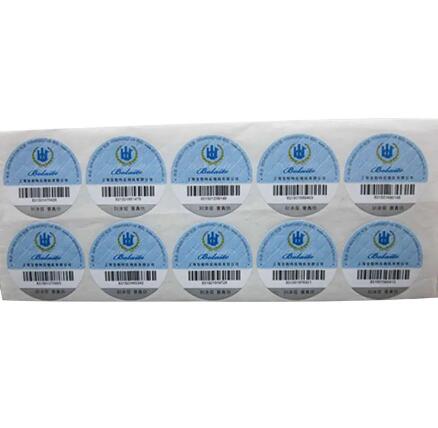How to Choose the Right Security Self-Adhesive Label for Your Business Needs
2024-09-04
Choosing the right security self-adhesive label for your business is essential in ensuring that your products remain secure and your brand is protected. With various options available, understanding the features and benefits of different labels can help you make an informed decision. In this blog, we'll guide you through the key factors to consider when selecting a security self-adhesive label for your business.
1. Assess Your Security Needs
The first step in choosing the right security self-adhesive label is to assess your specific security needs. Different products and industries require varying levels of security. For instance, high-value items like electronics or luxury goods may need labels with advanced security features such as holograms, tamper-evident seals, and unique serial numbers. On the other hand, products with lower risk levels may only require basic tamper-evident labels. Understanding the potential risks associated with your product and the level of protection needed will help you determine the type of security label that best suits your needs.
2. Understand the Different Types of Security Labels
There are several types of security self-adhesive labels, each designed to provide a specific level of protection. Here are some common types:
- Tamper-Evident Labels: These labels show visible signs of tampering if someone attempts to remove or alter them. They may leave a residue, reveal a "void" message, or break apart when removed.
- Holographic Labels: Holographic labels feature 3D images or patterns that are difficult to replicate. They are often used on high-value items to prevent counterfeiting and convey a sense of authenticity.
- Serial Numbered Labels: Labels with unique serial numbers provide a way to track and verify individual products. These are particularly useful in industries where traceability is essential, such as pharmaceuticals or electronics.
- QR Code Labels: QR codes can be added to security labels to provide additional information about the product or to link to a verification website. This is a useful feature for enhancing consumer interaction and trust.
Choosing the right type of label depends on your specific requirements and the level of security you need to achieve.
3. Consider the Material and Adhesive Quality
The material and adhesive quality of a security self-adhesive label are crucial factors that affect its performance. The label material should be durable enough to withstand handling, shipping, and environmental conditions without degrading. Common materials include polyester, vinyl, and tamper-evident films. The adhesive should be strong enough to ensure that the label remains securely attached to the product or packaging throughout its lifecycle. High-quality adhesive is particularly important for tamper-evident labels, as it ensures that any attempt to remove the label will leave clear evidence.
4. Customization Options
Customization is an important consideration when selecting a security self-adhesive label. Many suppliers offer the ability to customize labels with your company logo, colors, and specific security features. Customization not only enhances the visual appeal of the label but also helps reinforce brand identity. Additionally, customized labels can include specific security features that align with your product’s needs, such as incorporating UV printing or microtext that is only visible under specific conditions. This added level of detail can further deter counterfeiters and enhance the overall security of your products.
5. Regulatory Compliance
Depending on your industry, there may be regulatory requirements that your security labels need to meet. For example, in the pharmaceutical industry, labels must comply with strict guidelines to ensure patient safety and product traceability. It’s important to work with a label supplier who understands these regulations and can provide labels that meet all necessary standards. Compliance with regulations not only ensures that your products are legally marketable but also enhances consumer confidence in your brand.
6. Cost vs. Benefit Analysis
While it's essential to invest in high-quality security labels, it's also important to consider the cost-benefit ratio. Determine the potential losses that could occur from product tampering or counterfeiting and weigh them against the cost of implementing security labels. In many cases, the investment in security labels pays off by preventing significant financial losses and protecting your brand's reputation. However, be mindful of not over-investing in features that may be unnecessary for your specific needs.
Conclusion
Selecting the right security self-adhesive label for your business involves a careful evaluation of your security needs, understanding the types of labels available, and considering factors like material quality, customization, and regulatory compliance. By taking these aspects into account, you can choose a label that not only protects your products but also reinforces your brand's commitment to quality and security. Investing in the right security label is a proactive step in safeguarding your products and maintaining consumer trust.



